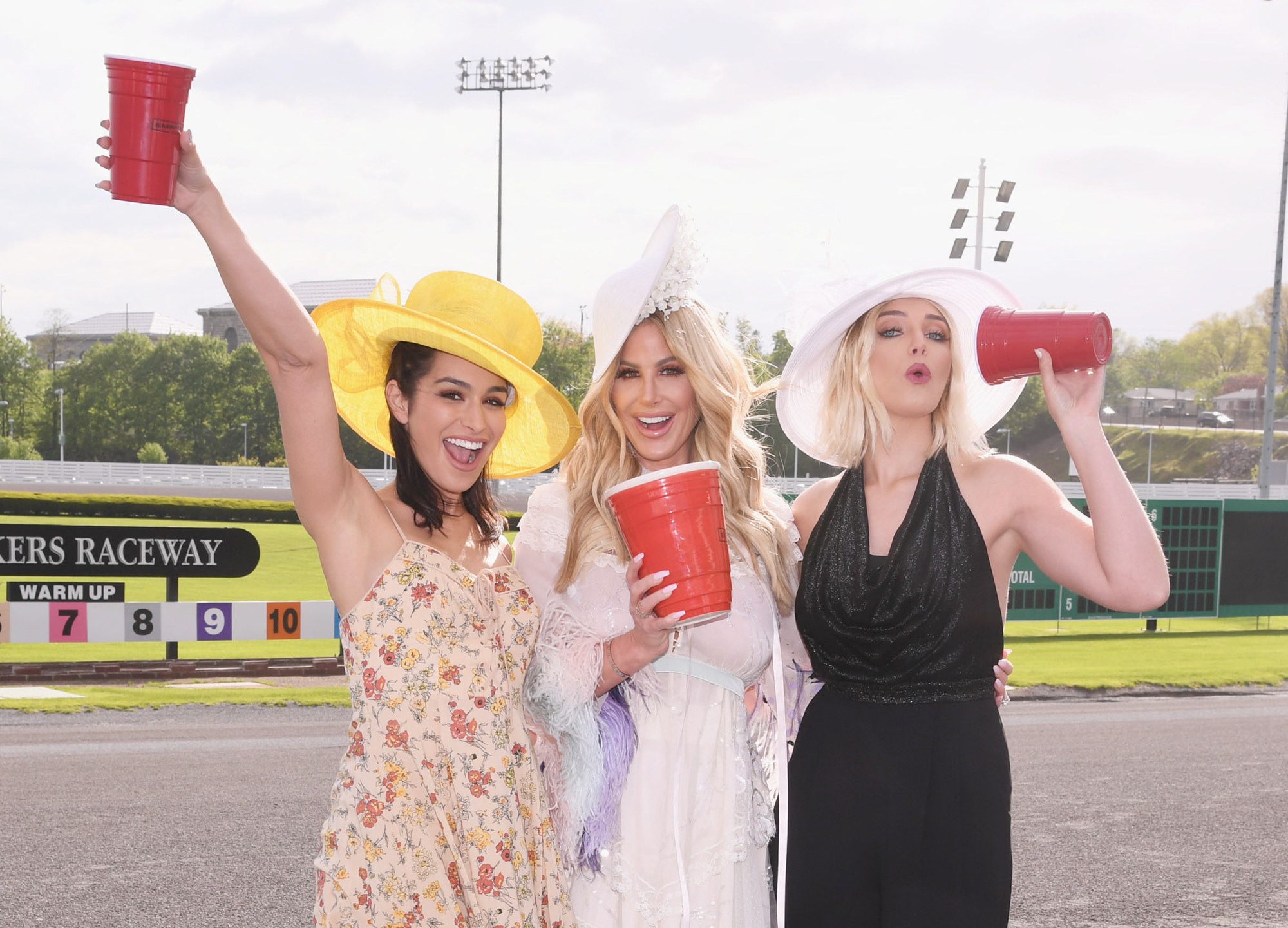- The Kentucky Derby is having its 144th run this year on May 5th.
- Wild fashions and large hats have long been associated with the Kentucky Derby.
- Horse racing and mint juleps are also embedded in the culture of the event.
Since the races were first run in 1875, the Kentucky Derby has been drawing thousands of celebrities, politicians, and Louisville locals to the horse track at Churchill Downs.
Started by Louisville Jockey Club founder Meriwether Lewis Clark Jr., the sporting event has a long history tied to horse racing, mint juleps, and, of course, the famous Kentucky Derby hat.
As you prepare to watch the 144th iteration of the big event Saturday, see an overview of the Derby’s history in photos.
Though the Kentucky Derby was held for the first time in 1875, photos of it began to appear in the 1920s. It was during this time that the derby began being broadcast on the radio, and five to six million listeners tuned in.

Starting in 1931, the Kentucky Derby was permanently scheduled for the first Sunday of every May.

Even throughout the years of the Great Depression, the race continued, though tickets were priced at 50 cents for a spot in the infield. In 1932, it was broadcast on the radio internationally.

In 1952, the Derby was broadcast on national television for the first time, with an estimated 10 to 15 million viewers.

Even in the 1950s, the Derby was a place to be seen. Here, the New Orleans restaurateur known as Diamond Jim Moran gets his diamond-studded toupee adjusted by a beautician before taking off for the Kentucky Derby. He was reportedly paid $50,000 just to make an appearance.

Source: New Orleans Magazine
By the 1950s, those attending the races still abided by the original dress code that was instated by Meriwether Lewis Clark Jr. It called for "full morning dress."

Source: Time
In the '60s, the Derby roared on with the opening of "Millionaire's Row," a premium spot to view the races as well as dine during the event.

In 1969, President Nixon sat alongside then-Governor Ronald Reagan and wife Nancy in the first-row box.

Secretariat, the winning horse of the 1973 race, still, to this day, holds the record for the fastest finishing time: 1:59.40.

Source: Quartz
For the Derby's 100th anniversary in 1974, 163,628 fans gathered to watch the race in person.

In 1984, more than $18.9 million was waged on a single race: a North American record.

In 1986, Churchill Downs officially became a National Historic Landmark.

Bold hats and outfits continued to be a staple of the Kentucky Derby in the '80s.

In the 1990s, Kentucky Derby ticket prices were raised to $30.

In 1999, fans were able to place Future Wagers, which allow spectators to bet on contenders leading up to Derby Day, raising their chances of winning.

Former heavyweight champion Muhammad Ali presented the '95 trophy to jockey Donna Barton.

During the '90s, the hat styles became even more outrageous, with fans wearing bold and non-traditional hats.

Some women kept it traditional ...

... while others donned unique pieces.

Even in the early 2000s, attendees were still paying homage to the original dress code.

Others were breaking the mold by wearing bright pink.

Some guests made a joke of the Kentucky Derby hat craze.

Some hats were an ode to the horses and jockeys.

Some hats were worn simply to block the sun.

Singer Macy Gray wore a bright pink hat to the 2004 races ...

... and so did singer Jessica Simpson.

Today, fans are still paying homage to the Kentucky Derby hat. In 2016, $192.6 million in wagers were made for the races.

Source: BetFirm

